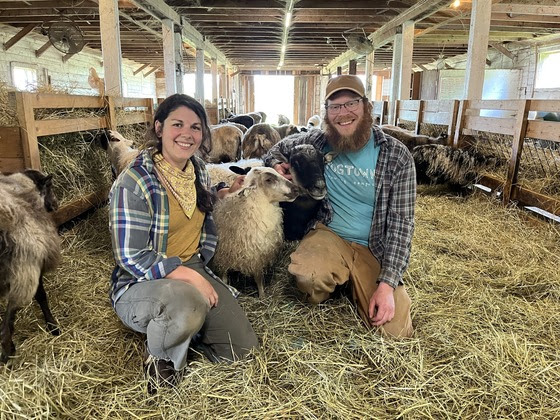Maine Farm Embraces Solar Energy Amid Rising Costs
TROY — While many people see Independence Day as the start of a leisurely summer, Maine farmers are entering their busiest season. At Moorit Hill Farm and Fiber in Troy, this July will bring not only long workdays but also energy production, thanks to a new 41-kW rooftop solar array.
Earlier this year, the farm installed the solar array, partially funded by a Rural Energy for America Program (REAP) grant from USDA Rural Development. Maine State Director Rhiannon Hampson visited the farm on July 3.
Agricultural Support and Sustainability
“As we celebrate this holiday weekend, it’s important to recognize the agricultural sector’s hard work,” said Director Hampson. “Maine farmers are putting in long hours to provide us with local options. Farmers like Elizabeth and Josh of Moorit Hill go the extra mile as stewards of Maine’s air, land, and waters.”
Josh Emerman and Elizabeth Goundie, founders of Moorit Hill Farm, raise Icelandic sheep for meat and fiber. They started custom fiber processing on-site in early 2023 after purchasing milling equipment from the former Aroostook Fiberworks. Their herd now numbers more than seventy, meeting the robust demand for locally raised lamb and wool processing from various farms.
Challenges and Solutions
Managing farm expenses and turning a profit can be challenging, especially with labor-intensive, electricity-driven operations like a mill. Rising electricity prices further narrow profit margins. To address this, Goundie and Emerman sought advice from the Small Business Association and Coastal Enterprises, Inc. Transitioning to solar energy provided a way to save on energy bills and reduce their carbon footprint. They secured a REAP grant that covered about half the project’s cost.
Today, the solar panels generate energy equivalent to powering 4.5 typical homes. “We pursued solar power to offset high energy usage and align our business with our values,” said Josh Emerman. “Now we are powering our farm and mill entirely using solar energy.”
Economic and Environmental Impact
Shelley Megquier of Maine Farmland Trust noted that farm production expenses have risen by 24% over the last five years. “Renewable energy options can reduce farm expenses and carbon emissions, but financial barriers are high for farms facing tough economic circumstances,” Megquier said. “The REAP program allows Maine farm businesses to significantly reduce on-farm energy expenses and their carbon footprint by installing energy-efficient heating and solar arrays.”
“People should thank a farmer on the Fourth of July because many of the Minutemen were farmers,” Director Hampson joked. “We owe appreciation to farmers every day. Programs like REAP help food producers remain economically viable.”
Moorit Hill Farm’s Market Presence
Moorit Hill Farm and Fiber sells products at the Blue Hill Farmers’ Market and special events like the Maine Fiber Frolic. They offer a variety of yarns, hand-knit hats, sheepskins, and lamb cuts at the market every Saturday through October. The farm is taking orders for whole lamb shares, ready for pick-up in October.
About REAP
The Department expects to make additional awards in the coming months. The next deadline for REAP applications is September 30, 2024. For more information, see the REAP Program Fact Sheet or contact Katrina Shaw, USDA Rural Development Maine State Energy Coordinator at katrina.shaw@usda.gov or call 207-990-9129.
Original Story at www.penbaypilot.com
